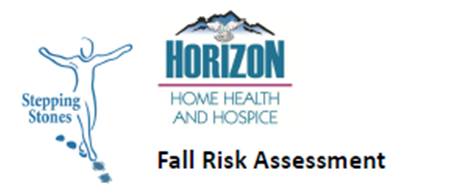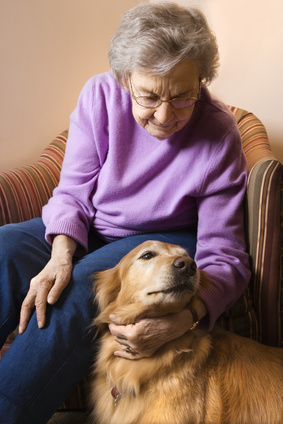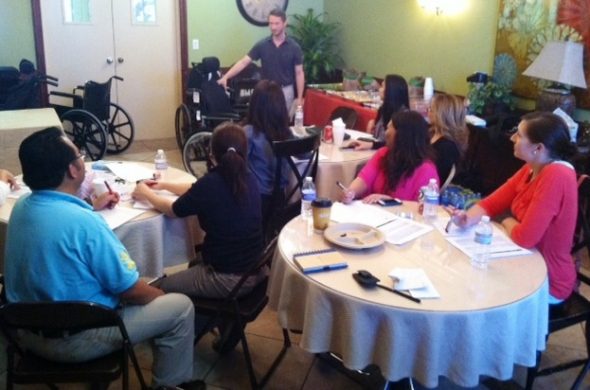 Mike Johanson, MSPT for Horizon Home Health in Idaho, wrote and has trained Cornerstone and other therapists with his Stepping Stones program of fall prevention. The one-and-a-half-day course helps therapists to further their understanding of differential diagnosis regarding symptoms of dizziness, disequilibrium motion sensitivity, imbalance, gait instability resulting from BPPV, central dizziness, visual weakness, somatosensory loss, musculoskeletal imbalance and movement disorder.
Mike Johanson, MSPT for Horizon Home Health in Idaho, wrote and has trained Cornerstone and other therapists with his Stepping Stones program of fall prevention. The one-and-a-half-day course helps therapists to further their understanding of differential diagnosis regarding symptoms of dizziness, disequilibrium motion sensitivity, imbalance, gait instability resulting from BPPV, central dizziness, visual weakness, somatosensory loss, musculoskeletal imbalance and movement disorder.
Understanding the Rationale for a Balance and Falls Program
- Approximately 30 percent of community living adults fall at least once a year
- Ten to 20 percent of these community living adults have two or more falls a year
- Falls are the most common mechanism for injury in older adults
- 10 percent of those who fall will sustain a serious injury
- Approximately 300,000 hip fractures occur annually in the United States
- 25 percent of these hip fracture patients will die within one year
- Somewhere between $25 trillion to $80 trillion are spent on healthcare related to falls
Emotional impact of falls
- Falls tend to lead to fear, leading to inactivity, leading to loss of confidence, leading to decreased quality of life for patients
- It is a spiraling downward path to decreased independence and mobility
- Initial reactions to falls may be to protect, limit mobility and provide restraints — strategies that may decrease the risk of a fall in the short term but ultimately lead to declined mobility and increased risk of falls
- Forty percent of all nursing home admits are related to a fall. Falls are a major reason for moving up/down the continuum of care provided by hospitals, assisted living facilities, SNF, home health and hospice.
Home health has the ability to make one of the greatest impacts on fall reduction. Being in the patient’s home environment gives us the unique opportunity to identify specific problems, deficits and needs and tailor our approach to treatment to address those needs. Nursing has the ability to identify medical conditions, monitor effectiveness of medications, evaluate/assess vital signs, instruct when there are knowledge deficits and act as a liaison between healthcare provider and patient. Physical, occupational and speech therapists are able to address biological factors that increase the risk for falls, i.e., muscle weakness; gait and balance deficits; visual, vestibular and somatosensory deficits; and cognitive deficits. Physical and occupational therapists can also address environmental risks for falls through home assessment — identifying barriers in the home that might contribute to falls; i.e., clutter, unclear pathways, narrow doorways, throw rugs, insufficient lighting, the need for adaptive equipment, etc. They also provide instruction and training for caregivers and patients as needed to minimize the risk of falls or injury to patients.
How Stepping Stones Improves Quality of Treatment and Outcomes
Quality treatment begins with comprehensive assessment: strength, ROM, posture balance, coordination, cognition and motivation. Traditionally, therapists have been effective at assessing strength, ROM, posture and mobility. A better understanding of balance and the systems that affect it will lead to more targeted treatment plans and strategies to address deficits. Balance assessment should include assessment of sensory input from the visual, vestibular and somatosensory systems as well as strength ROM and posture.
- Visual system: the primary system for balance. Therapist will assess for conditions affecting visual acuity, contrast sensitivity, depth perception and visual field deficits.
- Somatosensory system: the ability to feel surfaces below the feet and react appropriately to maintain balance. Therapist will assess for history of peripheral neuropathy and check sensation for light touch and pressure.
- Vestibular system: provides information to central nervous system about movement of head or body, sense of rotation and acceleration. Allows us to stabilize our vision during head and body movement. Therapist will assess for peripheral and central deficits in this system which might cause dizziness, disequilibrium, sensitivity to motion, inability to focus eyes during head movement and benign paroxysmal position vertigo that is the most common cause of vertigo.
- Therapists will also assess patient’s ability to integrate these systems to perform specific balance tasks. An assessment of the central nervous system will be done through oculomotor testing, cerebellar testing and test to determine patient’s ability to multitask.
By identifying the strengths and weaknesses of each of these systems, we can develop a tailored plan of treatment that addresses the specific deficits for each patient. Specific balance, sensory integration and oculomotor tests will be performed at the beginning of treatment to establish baseline, at mid-treatment and at the end of treatment to determine the effectiveness of the treatment plan and determine outcomes.
Our experience has shown that The Stepping Stones program has the potential to improve outcomes, decrease risk of falls in the future, decrease hospitalizations due to falls, save Medicare dollars, maximize patient independence and improve quality of life for our patients in a significant way.







